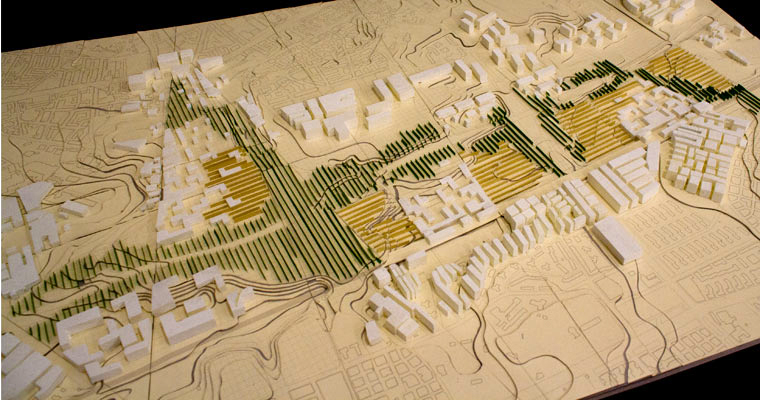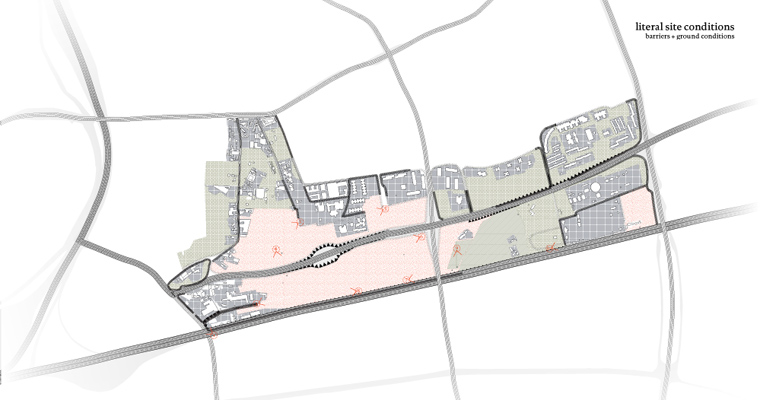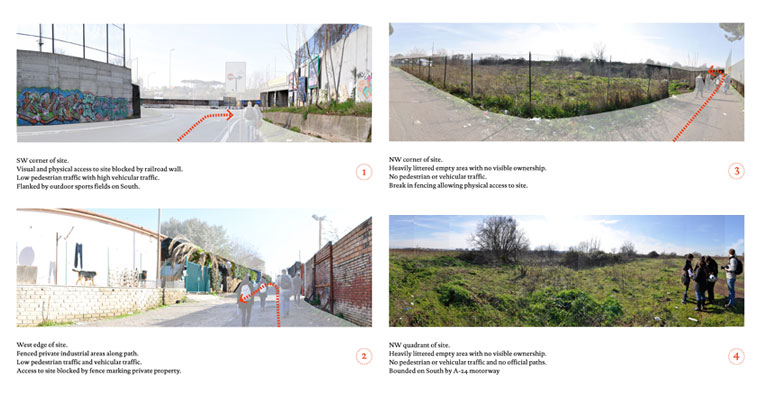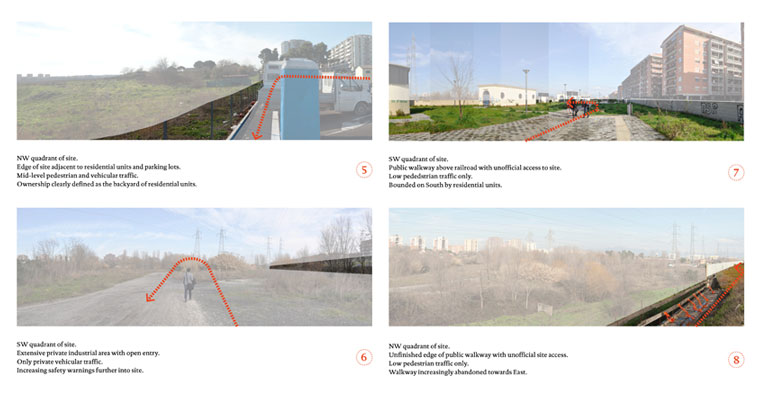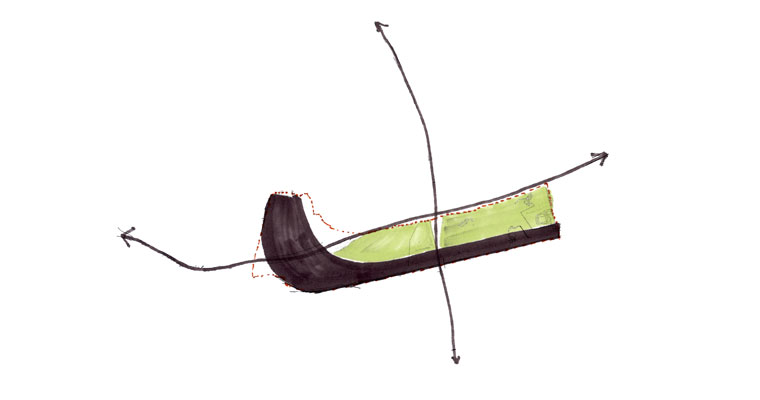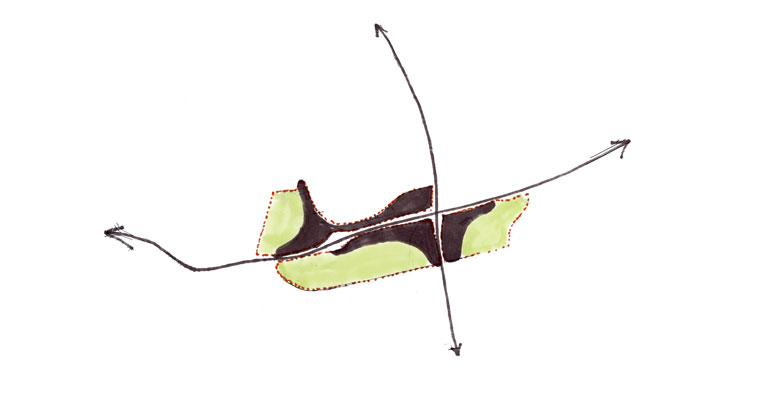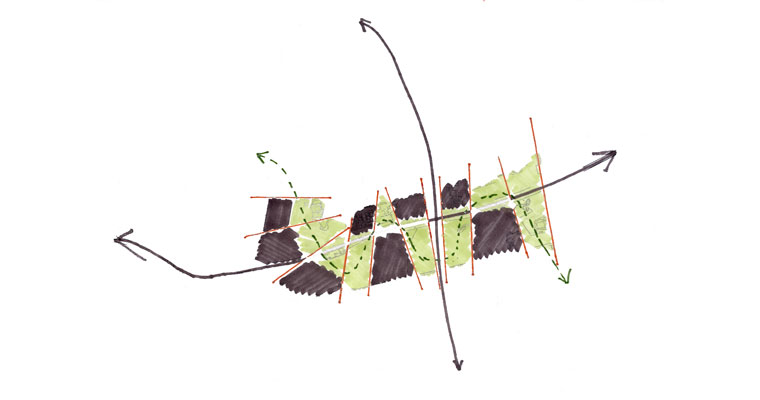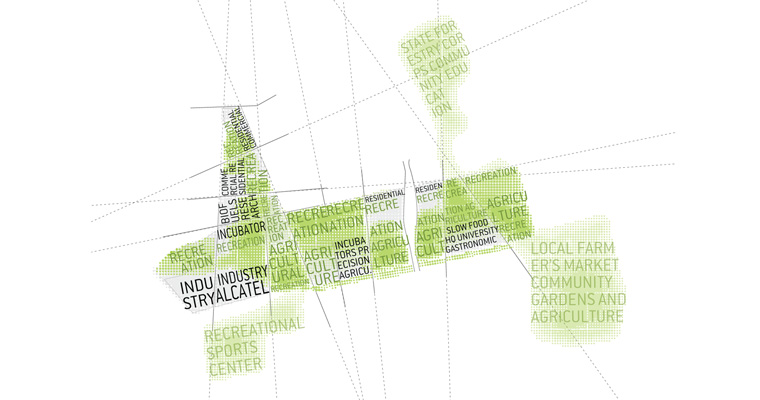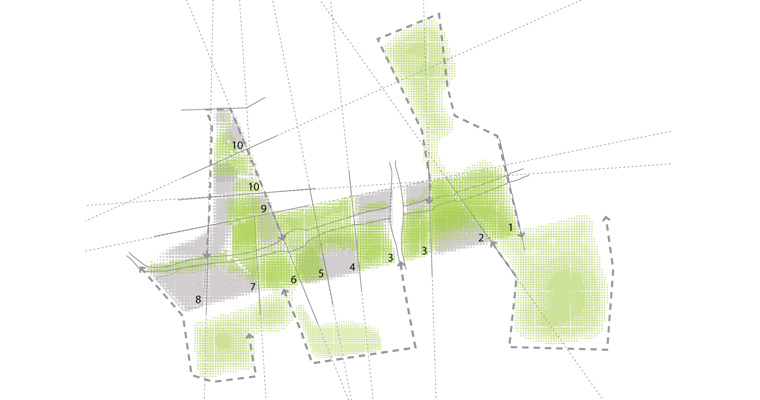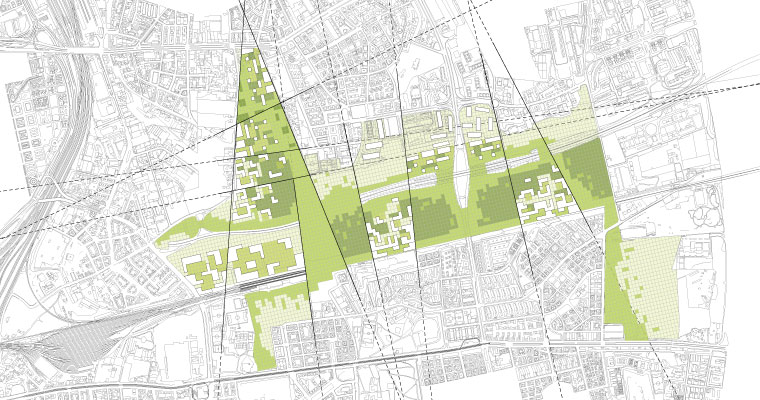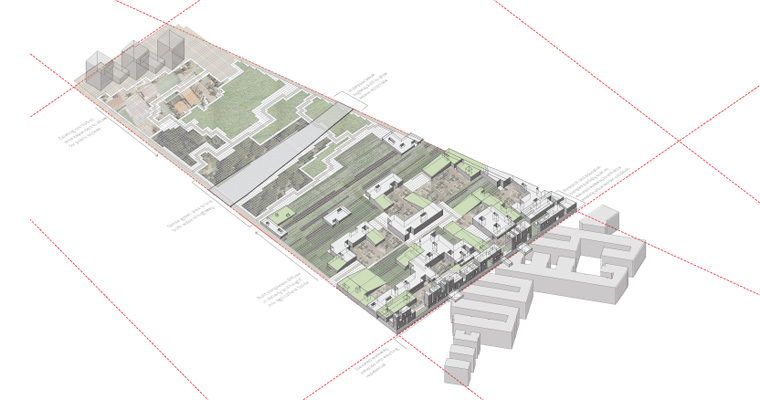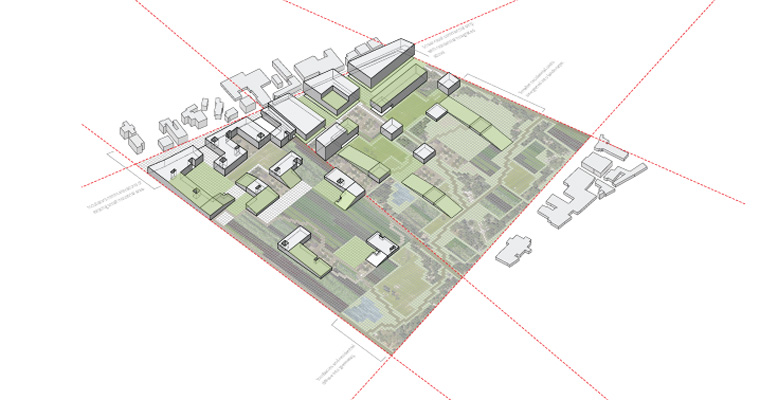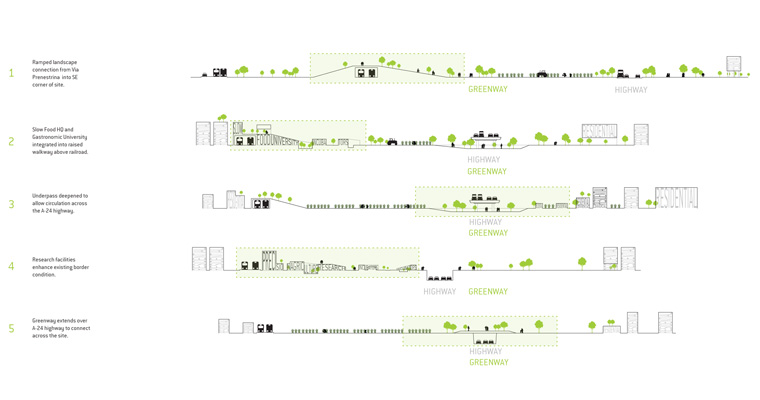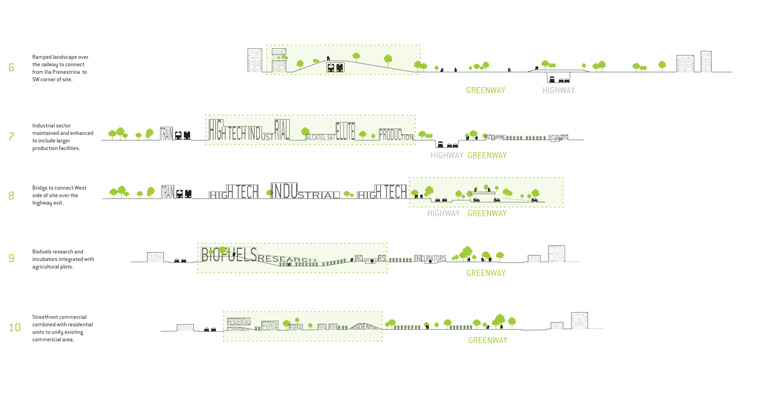tansymak
Greenway|Highway
- Spring 2011
- Architecture: Broderline Metropolis
- Site: Tiburtina, Rome
- Instructor: Claudia Clemente + Francesco Isidori (Labics)
- Collaborator: Denise Pereira
[inserting responsive barriers into the neglected Roman urban morphology]
We approached this course as witnesses of the existing urban morphology on the wedge site in the Tiburtina Valley of Rome. Existing conditions, given their use or disrepair, represent documentation of the needs of the site. Informal entries cut through fences and spontaneous agricultural communities point to the potential circulation, program, and development of the site.
Using our group’s analysis maps as a first layer of our design, we addressed the issue of edges/barriers by defining the relationship between our program and the city fabric beyond. By either enhancing or dissolving the barrier, we specify the distinct role of the program within the city. In order to address the varying conditions within the extensive site, we divided it into smaller segments that function individually as well as part of the whole. The advantages to this approach include a more responsive barrier and increased pedestrian accessibility.
